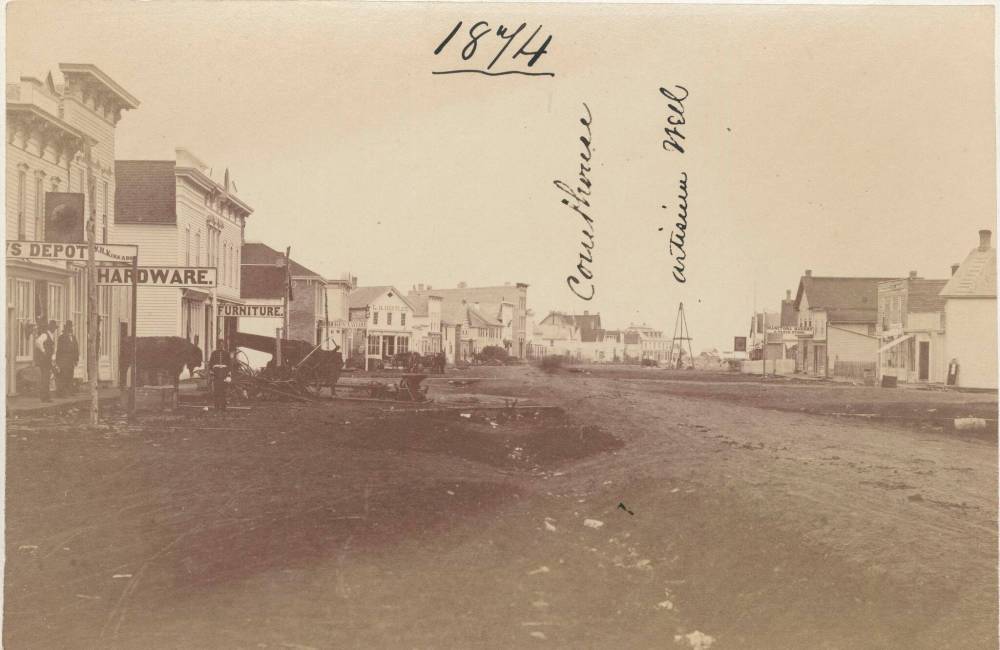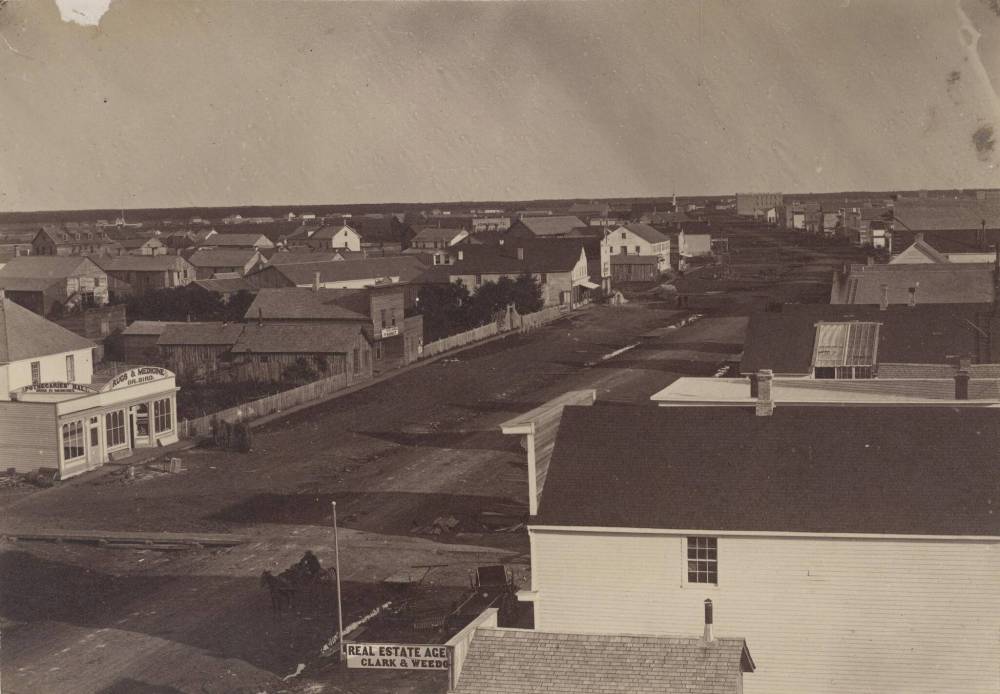Winnipeg’s inception a violent, messy affair
Advertisement
Hey there, time traveller!
This article was published 03/01/2024 (706 days ago), so information in it may no longer be current.
If you are a local history buff, 2024 is the year for you. Winnipeg is celebrating its 150th birthday and there are many special events and exhibits in the works.
On Nov. 8, 1973, the Manitoba Legislature’s Act to Incorporate the City of Winnipeg received royal assent. The first civic election took place the following January, which is why the city considers 1874 its year of inception.
This was not the first attempt at creating a capital city. In March 1873, a similar bill made its way through the legislature but when it came time for the final vote, the speaker, Dr. Charles Bird, threw it out on a technicality. This angered many and some took revenge on him.

City of Winipeg Archives
Main Street looking north from Portage Avenue, 1874.
At around 1 a.m. on Friday, March 7, 1873, a young boy knocked on Dr. Bird’s door to summon him to a supposed medical emergency in the north part of the city. The doctor, ill with the flu himself, got dressed and went out into the chilly night.
As he was travelling down Main Street, Bird was ambushed. The Manitoban and Northwest Herald newspaper of March 8, 1873, described the attack this way: “Eight or ten men ran over and stopped the cutter. One fellow got his arm around the doctor’s throat, while another gagged him…. He felt something cold put up to his head and made an attempt to speak but was knocked senseless”.
When Dr. Bird came to, he was on the ground being trampled by two or three of the men and realized that during the ordeal he had been covered in warm tar.
Despite the daring nature of the attack on an elected official and the offer of a reward for their arrest, the perpetrators went unpunished. Such was politics in a frontier town.
Bird survived his ordeal and was still speaker of the legislature eight months later when a new bill was introduced. This time, it passed, and no one was injured or assaulted.
The Act’s preamble, “Whereas a great number of the inhabitants of Winnipeg represented that it is desirable that the same should be incorporated as a City under the name of Winnipeg”, solved the long-standing question of what to call Manitoba’s soon-to-be capital. In the March debate, individual members submitted amendments to try to change it to the City of Selkirk, City of Assiniboia, and City of Garry.

City of Winnipeg Archives
Main Street looking south from present-day William Avenue, pictured in spring, 1874, the year of the city’s first civic election.
The 40-page act detailed the boundaries of the new city and the rules of engagement for the first civic election. It also outlined the powers granted by the province to the new city council, including approving the erection of buildings within city limits, the creation of a police force, the responsibility for building and maintaining roads and bridges, and the ability to levy certain taxes.
On Jan. 5, 1873, Winnipeg’s first city council, made up of 12 aldermen and mayor Francis Cornish, was elected and the process of city building began.

Christian Cassidy
Christian Cassidy is a Manitoba Historical Society council member and a proud resident of the West End. He has been writing about Winnipeg history for more than a decade on his blog, West End Dumplings.
Our newsroom depends on a growing audience of readers to power our journalism. If you are not a paid reader, please consider becoming a subscriber.
Our newsroom depends on its audience of readers to power our journalism. Thank you for your support.




